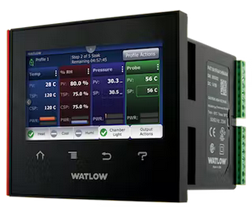So, you need a process controller… now what? How do you go about making a selection that you will be confident in that is optimized for your specific application? There is no shortage of options available as you make your way through the process, and it’s difficult to know what features to prioritize, especially when faced with a tight budget.
First and foremost, it is important to understand that the process is not simple, and it’s critical to consult with an expert before locking into any decision. There are a few basic questions that need to be asked right out of the gate:
- What are we trying to control?
- Do we need to regulate temperature?
- Do we need to regulate pressure? Humidity? Flow?
- Will the controller be communicating through a network? What type?
Those are the basics that you need to consider. However, inside each of those questions comes more finite detail that can easily be overlooked. Before making a significant investment in a controller, we need to find out exactly what is required.
Depending on what we’re trying to control, the number of control loops required may change. Are we only looking to control temperature, or do we also need to control pressure and flow? The number of loops needed is a direct reflection on these pieces of data, and taking it a step further, the number of control loops affects the type of inputs and outputs needed on the controller itself.
One option may be good to satisfy one need but won’t work for another. Sometimes, the perfect solution for your application won’t be so evident. However, an experienced process engineer can walk you through all the pros and cons until you find what works best.
In addition to the required compatibility with your current network, the package must fit the application. Physical size is important, and personnel interaction needs should also be considered. How are team members going to interact with this controller, and is accessibility going to be an issue?
In the end, we want to make sure that decision-makers understand the sheer number of variables at play. You do not want to pay for features you don’t need. At the same time, you want to make sure your controller can do everything your process requires and can meet potential future requirements.
Fortunately, I contributed a fully fleshed out
article on this topic for Process Instrumentation Magazine last fall. I encourage you to give it a full read when you have a chance.
Talk to one of our experts today at
(855) 737-4718 or fill out our
online form to learn more.
